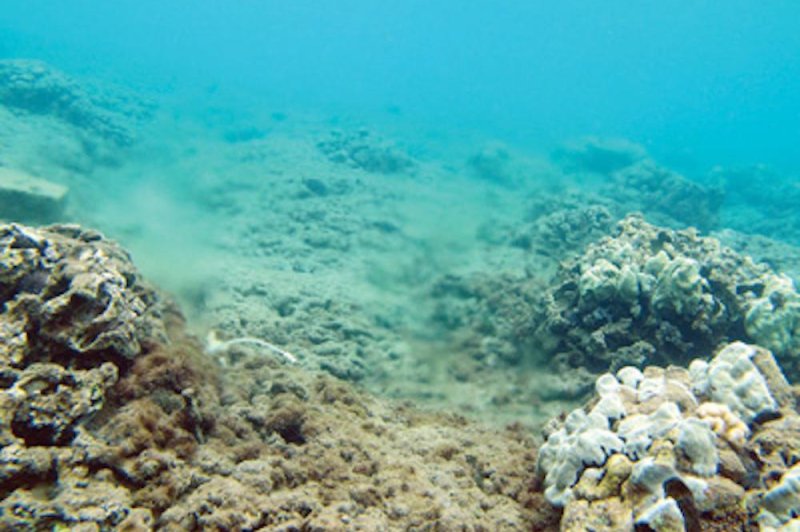Excess nitrogen is harming Hawaiian coral reefs. Now, scientists know where the excess nitrogen is coming from. Photo by Peter Swarzenski/USGS
April 3 (UPI) -- Scientists have finally linked the excess nitrogen degrading Hawaiian coral to a wastewater treatment plant that injects treated sewage water into the ground.
Previous studies using dyes showed wastewater from the Lahaina Wastewater Reclamation Facility was making its way into the ocean via small submarine seeps. However, with so many sources of nitrogen, it was difficult to prove the facility's wastewater was to blame for the excess nitrogen harming reefs along the West Maui coast.
"They didn't have a smoking gun to say that the nitrogen came from the sewage," Adina Paytan, a research professor UC Santa Cruz's Institute of Marine Sciences, said in a news release.
To identify the source of nitrogen, scientists developed a method for measuring isotope ratios in the nitrogen trapped in the coral skeletons. The crystal structures that make up coral skeletons are deposited in layers as the coral grows. Like tree rings, they can provide a record of the environmental conditions during a particular period of growth.
Researchers were able to track the changing isotopic ratios of nitrogen in the layers and compare the patterns to changes in the wastewater facility's operations schedule. Their analysis yielded a 40-year record of nitrogen levels. Scientists found nitrogen levels in the coral skeleton spiked after 1995, around the time the facility began using a biological nutrient removal process.
The treatment process removes mostly lighter nitrogen isotopes, so the remaining nitrogen features a greater concentration of heavy isotopes, a pattern reflected in the coral skeleton samples analyzed by Paytan and her colleagues.
The new findings prove nitrogen from the facility's wastewater injections is a major contributor to the nutrient overloads fueling algal blooms and plaguing coral reefs in Hawaii.
"There is no other process that would result in this signature, so it has to be from the sewage," she said. "Even though the treatment process removes some of the nitrogen, there is so much in the sewage that there is still a lot left, and when they inject it into the groundwater it ends up in coastal waters."
Scientists detailed their discovery this week in the journal Scientific Reports. Authors of the new study hope their analysis technique will be used to traced the origins of other excess nutrients.
"It's a very accurate and high-resolution way to record past nutrient pollution in seawater, which is a huge problem globally," Paytan said. "It opens up a lot of possibilities for looking at historic nitrogen pollution and other changes in nitrogen sources over time. And you don't have to use coral -- you could also use clam shells, for example."















